My essay is a basic approach to remedial exercise for specific knee pain due to insufficient ankle mobility. Most individuals have uncomfortable knees below the knee, also known as a “jumping knee” or a “running knee”, such as discomfort on the side of the foot/knee. Please be aware of the difference between “discomfort” and “pain”. As I always tell my clients, “we don’t work through the pain,” but discomfort is a warning sign. Stop exercising and learn to respond to pain and control. Discomfort is a prelude to aggravating a bad condition. Fortunately, caring for discomfort and using some exercise science and insight can often help us reverse the disease.
If you have constant skateboard knee pads, I recommend that you consult a doctor. In conclusion, I highly recommend that you have your healthcare professional evaluate your position, flexibility, and balance of muscle strength. The information will help you be more effective in your exercise and prevent any common dysfunction. Your goals are easier to achieve because you will gain more muscle for your training and you will not cause injury.
This is part 1 of my ‘Does your knee hurt?’ essay. In this essay, I will discuss the importance of hamstrings and muscle balance in the calf/shin muscles. Imagine what you will do when you get out of bed. The first part of our body that touches the ground is our toe, followed by the other toes, and the abdomen of the foot. If you injure your big toe, you will easily notice the importance of the movement of our spine and how it affects our position. We can compensate for the pain in the toes by changing the way we walk, subconsciously, by resting the knee on the part of the body that tightens other muscles and joints.
Most knee pain is the result of an inactive lifestyle (8-10 hours of sitting or inactivity per day), muscle imbalances, poor exercise patterns, and lack of rest (excessive use). Other possible factors include flat feet, posture, age, type of shoes, previous surgery, etc.
Knee discomfort usually results from ACL or MCL dislocation (anterior cruciate ligament – anterior knee, meniscus cruciate ligament – both sides of the knee). Look at the ligaments as “shock absorbers” in the knee. There are other ligaments in the knee, but I will discuss the most common injuries. The joint is excellent when you consider the pressure/shock it absorbs during our normal work walks, stairs, jogging, and even sudden stops. Without a strong knee, our fastest daily routine can be a challenge. Did you know that the foot moves in all anatomical planes, unlike the knee, which moves primarily in the sagittal plane (flexion and extension).
People who sit all day usually have tense hamstrings, hip flexors, bare muscles, weak buttock muscles, and inactive inner leg muscles. Keep in mind that some preventable muscle imbalances and joint dysfunctions can be caused by overuse or a sedentary lifestyle, such as low back pain, hip/hike, neck pain. If you have strong muscles, their basic movement can be changed. For example, tense hamstrings and a tense lower back often indicate weak buttock muscle. The weak gluteus muscle functions as an extensor muscle dominated by the hamstring and lower back. It limits your range of motion in the hip joint and affects the upper and lower joints: spine, shoulders, rotator cuff, and also knee.
The knee below the knee is the knee. Tense calf muscles, sitting all day, or wearing high heels can change bowel movements. The skin muscles cannot play this primary role, because the “opposite muscle” of the calf is the one that overcomes it due to its stiffness. Many people get shin splints and plantar fasciitis due to tight calf muscles and weak tibial muscles. It is important to realize that muscles do not work independently. Second, if you have tight muscles, the opposite muscles are usually weak and need to be strengthened. Remember, the muscles wrap around our joints. As they tighten our joints, they affect various movements and go through our posture and the chain of motion of the human body.
Some symptoms of tense calf muscles and weak shin muscles:
Runner’s knee muscles on the hip/leg side up to the knee. (ITB, TFL)
Plantar fasciitis
Shin splints
Achilles tendonitis
- Pain in the lower back
- Older legs are twisting
I highly recommend seeking medical help.
Basic diagnostic tests of flexibility and extension of hamstring and calf muscle:
Sit on the floor with your feet up and straight. Sit up straight, breathe and touch your toes. Generate results. How far are your toes? Note: You may have flexible hamstring muscles with firm calf muscles. This is usually a test of the flexibility of the hamstrings. When you touch your toes, go to the drill to stretch the tube.
Sit back and reach out:
Foam Roll: For each Out: Self Myo Fascia SMR Roll) is available everywhere. Most gyms have it, but few use it. I use it to regenerate/remodel muscles and to control muscle tension. Place the foam cylinder under the calf muscles. Lift your body off the floor with your hands to get more pressure between the foam cylinder and the calf muscles. Inhale and draw a navel. Finally, cross one leg to the other and check the tension. If on a scale of 1-10, losing 5 is uncomfortable, and your score is higher than 5, then you have tightened your calf muscles. For more information on foam rolling techniques, visit my website or view the e-book “Exercises with maximum reinforcement”.
Resistance Tube Calf Stretch:
This is safe through knee pads to control bald muscles . Get a resistance tube or thera-band with a voltage of 15lbs-20lbs (a towel can also be used). Sit on the floor and place two handles over the bridge of your foot. NOTE: Be sure to secure it to the footbridge, otherwise it will come loose and hit you in the face. After securing the handle, grasp the opposite side of the tube with your hands and place it on your back. The foot WITHOUT the footrests should be straightened so that the knee touches the floor and the toes point.
Slowly follow your foot with the handles over your foot. Pull the leg to the hip and make sure the leg is straight. Once you achieve maximum hamstring flexibility, point your thumb toward the front. You have to feel the bare muscles stretch. If you feel stretching in the back of your knee or hamstrings, this can cause knee injury. Hold for 1 minute and 30 seconds, exhale and place your shoulders, head, and lower back on the floor.
Recommended corrective exercises for firming calf muscles and ankle mobility:
Foam Tighten the calf muscles, including the lateral and skin muscles. Find a soft spot and hold it for 45 seconds. One technique is to place a foam roller under the bald muscles. Lift your body off the floor with your hands to get more pressure between the foam cylinder and the calf muscles. Inhale and draw a navel. Finally, cross one leg to the other and check the tension. If on a scale of 1-10, 5 is uncomfortable, or your score is higher than 5, then you have tense calf muscles. For more information on foam rolling techniques, visit my website.
First:
Tennis Ball: It’s like rolling foam. In your seat, place a tennis ball under the footbridge (no shoes/sandals). Roll the ball under your feet and slowly push it down. If you find a soft spot, hold it for 40 seconds. Repeat if necessary.
Tube Stretch:
This is a safe way to control tense calf muscles. Get a resistance tube or thera-band with a voltage of 15lbs-20lbs (a towel can also be used). Sit on the floor and place two handles over the bridge of your foot. NOTE: Be sure to secure it to the footbridge; otherwise it will come lore and hit you in the face. After securing the handle, grasp the opposite side of the tube with your hands and place it on your back. The foot WITHOUT the footrests should be straightened so that the knee touches the floor and the toes point. Slowly follow your foot with the handles over your foot. Pull the leg to the hip and make sure the leg is straight. Once you achieve maximum hamstring flexibility, point your thumb toward the front. You have to feel the bare muscles stretch. If you feel stretching in the back of your knee or hamstrings, this can cause knee injury. Hold for 1 minute and 30 seconds, exhale and place your shoulders, head, and lower back on the floor. Repeat if necessary.
Stepper or Tri-Stepper:
Steppers are a convenient way to stretch your calf muscles. There is now a Tri-Stepper with which you can stretch your calf muscles in all anatomical planes (left, right, back, forward). They may have different names, but your healthcare provider can understand and help you. Shin Strength Training: These exercises are best done with a partner, but can only be done. You will need a resistance tube, tape, or cable machine. You want to train your skin muscles from (3) different angles. You must do these exercises diligently and go for a full range of motion instead of speed / increased tension.
Sit straight on the bench with one foot on the bench. Your spine and foot are a little off the bench. Remember your toe hurts. Place a resistance tube (voltage 10lbs-20lbs) over your foot. Pull your partner’s handle and leg down and away from you (plantar flexion)… you’ll be dorsi.


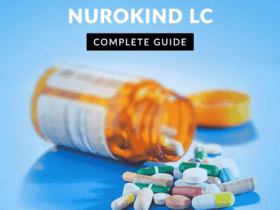

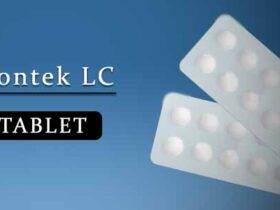




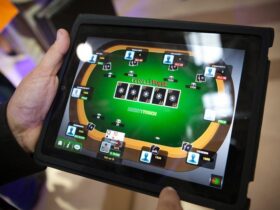



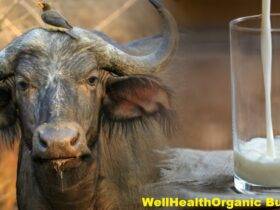
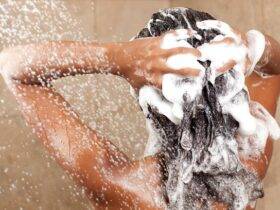

Leave a Reply